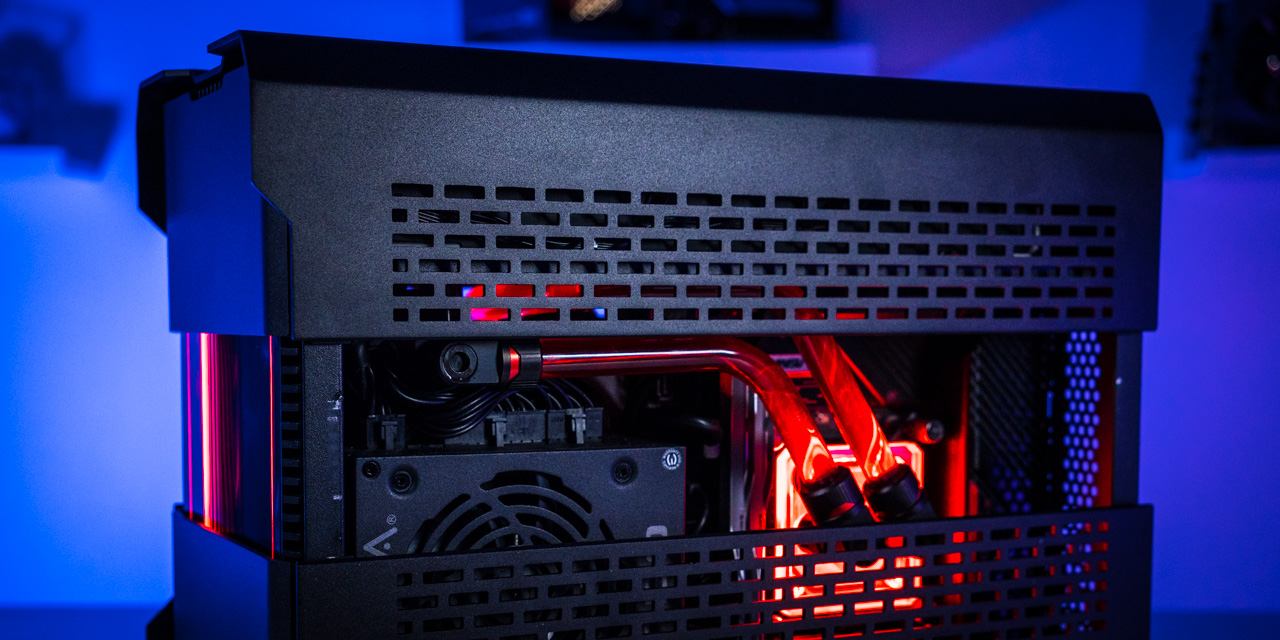
In the smallest configuration, with no fans to aid airflow, the temperatures were obviously higher, but still not unreasonably so and I experienced no throttling in any of the three tests with either the CPU or GPU. In this configuration, the removal of the side mesh panels did make a measurable difference for the CPU temps, but only 1.5 degree improvement for the GPU.
With the top panel set to the medium configuration, and the addition of two Phanteks T30 fans set to exhaust at a fixed 800 rpm, the temperatures were what I would call excellent in such a small, air cooled system. During any of the testing, I was able to place my hand above the fans and feel how effectively they were pulling the hot air out of the system. With the mesh side panels removed, the temperature difference was negligible on either the CPU or GPU. Having fans pulling air through the system really helps the Shift XT, and this would be the configuration I’d most recommend to someone interested in this enclosure.
The temperatures in this configuration were why I elected not to test this case with an AIO. In this case, if using an AIO for the CPU, the top radiator is not only going to impede the exhausting of hot air from the GPU, but the hot air from the GPU is going to interact with the fins of the radiator, lowering its efficiency. If one absolutely wanted to populate an AIO radiator in the top, I would actually recommend using a hybrid cooled GPU, as the GPU is going to be the major heat producer in most systems today.






